More and more articles are appearing in various media regarding the process of obtaining financing for log homes. This artical appeared in the Log Home Living magizines on line web site and thought I would share it as it has some very good points to consider if you plan on financing your log home.
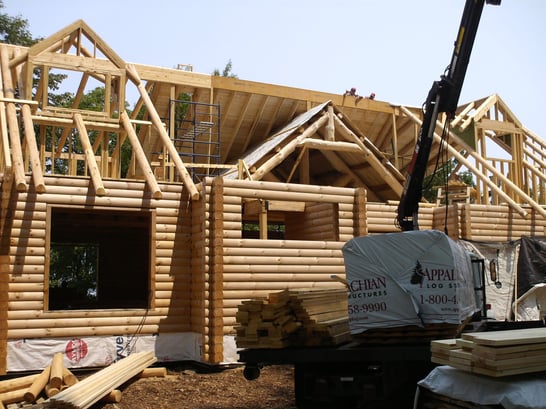
Most log home buyers finance their purchase. The tax write-off alone makes getting a mortgage enticing even for those rare few who can pay cash. But how do you determine how much house you can afford, and how much of that will come from the bank? When you’re ready to buy your log home, calculate your target budget by adding your assets and how much you can borrow. It’s that simple.
However, even though interest rates are still hovering at historical lows, the days of “no money down/no equity required” and so-called “exotic loans” are long gone. Like everyone else, banks need to protect their investments and doing so means reducing risk with sizeable down payments and proof of real collateral.
“Money is still readily available for qualified buyers,” according to log home mortgage specialist Tom Coronato with Citizens Bank. “A lot of these loans are going to be more lender specific or portfolio based, meaning that the banks that grant them and service them are one and the same.”
In other words, the bank is carrying the full risk. Lending expert Greg Ebersole with BB&T agrees.
“The idea that qualified borrowers have been rejected is a lot of media hype,” he says. “I’ve never seen a qualified customer not be able to obtain a mortgage. The real difference now is that we need a lot more documentation than what was required in the past.”
“Log home loan applicants are a little different, because we typically have a well-educated, sophisticated buyer; but often we find they still have difficulty with the basics and don’t understand why we have to ask for so much information,” Tom explains. “They think they can leverage their relationship with a bank or get a light-document loan, but TRID changed all the rules.”
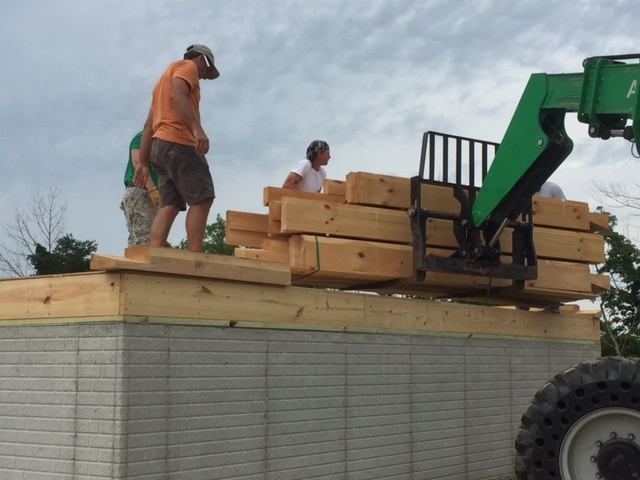
Construction Loans and Draw Schedules
Once you have what it takes to qualify, financing proceeds. If you are purchasing a pre-existing log home, the process mirrors every other kind of home loan. But if you are like most log home buyers, the biggest difference from a conventional loan and yours is the fact you’ll need two. One is the standard mortgage, ranging from 15 to 30 years. The other is a short-term construction loan.
The construction loan pays for the materials and labor needed to build your home. These loans are made for periods from six to 18 months and have higher interest rates than mortgage loans because as far as banks are concerned, they carry more risk. According to Greg, lenders will want at least a 20 percent deposit on a construction loan because of that risk.
Typically, you pay only the interest until the project is completed and the mortgage takes over and adds the construction loan principal. As a general rule, the lending process works smoother and should be less expensive if one lender handles both loans.
You may even be able to get a one-time-close loan (a definite advantage in terms of reducing paperwork and closing costs), though Greg says these are tougher to come by than they used to be. Otherwise, you’ll qualify for the mortgage first and get a letter from the mortgage lender that assures the construction-loan lender its loan will be repaid.
Before granting construction loans, lenders carefully study the project and evaluate the builder’s ability to complete the home according to the plans, budget and schedule. Once the loan is granted, the lender disburses the money according to a draw schedule, which pays certain amounts at various milestones to cover work completed up to that point. Progress is verified by onsite inspections, which determine that the labor was performed and specified materials were used.
Typical draw schedules include five or six payments. The first might be made when the foundation is completed, the second when the log shell is erected and under roof. The next-to-last draw will probably occur when the house is completed and the certificate of occupancy issued. The last draw generally comes 60 to 90 days after completion to allow sufficient time for any subcontractors or suppliers to have filed mechanics’ liens.
As the balance of the loan dwindles because of these draws, the interest amount also goes down thanks to this lower balance. A big difference between construction loans for log homes and other custom homes is that the log home company providing the package expects to be paid a substantial down payment before cutting and shipping the logs. Avoid making a large down payment for your package until you’ve secured your financing; then there are several ways to proceed.
Some lenders view a log package as just another load of lumber or as work under way at the producer’s plant. They’ll release funds when you or the manufacturer request them. In other cases, the lender may refuse to release any money until the package is delivered to your lot. If this occurs, ask your lender to issue a promissory note to the log home company guaranteeing that payment will be made on delivery.
Often, the lender can wire transfer the money the same day as the logs arrive. In any circumstance, your builder/dealer (Who’s that? See page 53 for info.) should be able to help you make arrangements for the most convenient financing of your log package.
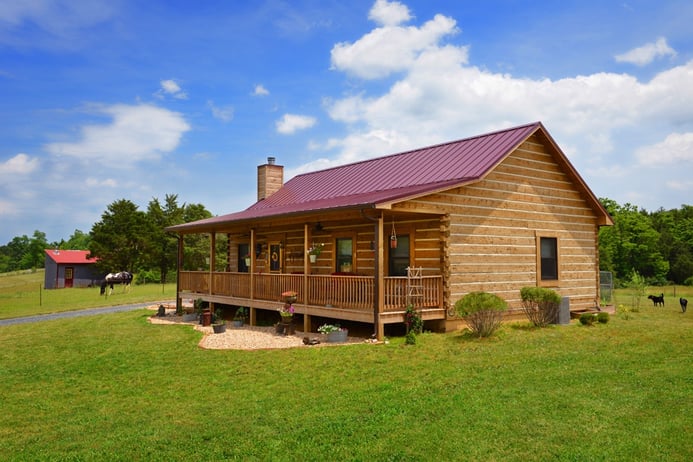
Comps and Appraisals
The most formidable obstacle, apart from the down payment, is the appraisal process, specifically comparables (aka, “comps”). Why? In most areas, log homes are few and far between, and there are even fewer recent sales to establish comparable resale values. (The fact that you never intend to sell your log home is of no consequence to the lender.)
Some appraisers will consider non-log custom homes of a rustic or wood-sided nature as comps, but even these can prove scarce. Distressed sales during the housing crash haven’t helped matters either. A helpful sales rep should be well equipped to explain a log home’s true value to lenders and their appraisers.
When the time comes to submit a formal application, lenders will require 20 percent down. Some may accept a smaller deposit, if you qualify, but expect to pay PMI (private mortgage insurance). On the flip side, according to Greg, if your appraisal comes in short, your lender may ask for a bit more up front. Other factors that affect their decision to approve you are the ratio between your income and the expected mortgage payment and the ratio between your income and total long-term debt.
These ratios can fluctuate, but as a rule, the expected mortgage payment cannot exceed 28 percent of your family’s monthly gross income. In addition, your total monthly expenses, including the mortgage payment, shouldn’t exceed 36 percent of your monthly household gross income.
Other Requirements
Besides your financial status, lenders will want to know exactly what you’re going to build, how much it will cost, how long it will take and who’ll be doing the work. This will help the lender estimate the home’s potential value and determine how much it will lend. Here’s some information you’re likely to need:
Building Permits.
Blueprints or construction documents that comply with local building codes will have to be presented to the local permitting office for approval before you can obtain a building permit.
Sales Contract for the Log Home Package.
This should include a complete bill of materials that your log home producer will supply.
Plans and Specifications.
A floor plan in a producer’s catalog isn’t enough. Bring working plans, detailed materials specifications and descriptions of building materials. These documents will tell the lender exactly what is being financed and help the loan officer assess its value.
Complete Cost Estimates.
You’ll need copies of written bids and estimates to determine a detailed cost estimate.
Builder Contract.
If you are hiring a general contractor to build your home, you must have a copy of the agreement showing costs and specifications. Note that to keep risk in check, most lenders are more comfortable approving a loan if a professional, not an owner/builder, is at the helm.
Statement of Your Construction Abilities.
If you do intend doing some or all of the work yourself, supply the lender with information on your qualifications, such as photos of projects you’ve completed or other evidence that you’re capable of tackling — and completing — the construction of your log home. The more you can reduce risk of default in the bank’s eyes, the better your chances of getting approved.
Survey or Plot Plan.
This plan shows the exact location of your land and provides a legal description of the property.
Land Deed.
This document shows the title and mortgage information on the property where you intend to build.
Information on the Log Home Producer.
Anything that explains what kind of home and services you’re buying will be helpful, including a copy of the company’s annual report and its construction manual. When giving the above information, be sure the lender clearly outlines its fees and provides a written estimate of all closing costs associated with your loan. Charges vary among banks, so this information will let you shop for the best rate among the lenders willing to finance your log home.
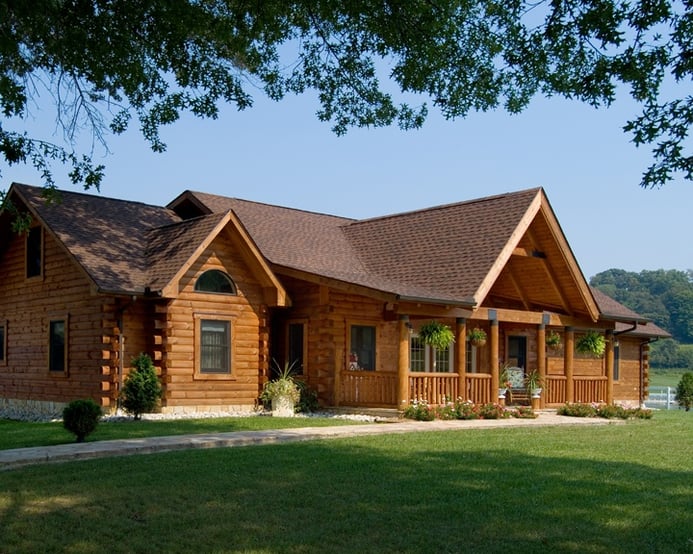
What Do You Need to be Prepared?
Tom Coronato from Citizens Bank has helped scores of buyers secure log home loans by helping them put together a complete picture of their current financial positions. Here’s what he says he and other lenders need to help you qualify for cash:
- A 700+ credit score is ideal
- Two years of W2, 1099 and full 1040 (federal, not state) forms, both personal and business, plus K-1 form (if applicable)
- Thirty days of paystubs or monthly pension advisements
- Your Social Security or pension award letter
- Two months of complete bank statements for accounts, including savings, checking, stocks, etc. — every page, not just the summary
- Your most recent quarterly 401k statement and/or other retirement accounts
- A letter of explanation on any negative credit (if applicable)
- A mortgage statement for your current home and any additional properties you own
- An estimated contract for your new log home plan to justify the amount you want to borrow
- A contract for the land on which you intend to build (a HUD-1 prior to October 2015; a CD after that date)
- A 20 percent down payment
With this information, lenders will look at your income-to-debt ratio, any large or unusual deposits (per The Patriot Act) and your work history to help them determine your ability to repay the loan. If the bank deems you a qualified borrower for the amount you are requesting, there is plenty of money to be had.
Navigating the New Lending Regulations
If you’ve purchased a home in the past 40 years, you likely recall terms like TILA (the Truth in Lending Act) and RESPA (the Real Estate Settlement Procedures Act). But as of August 1, 2015, these processes and forms that have been around since the mid-1970s were replaced with something called the TRID, which stands for the “TILA-RESPA Integrated Disclosure” rule. In addition, the previous use of the Good Faith Estimate and Truth in Lending disclosures were eliminated in favor of a new single Loan Estimate form, or “LE,” and the HUD-1 Settlement Statement was replaced by the Closing Disclosure, or “CD.”
All of these changes sprung from the Dodd-Frank Act passed in 2010 by President Obama, which placed major regulations on the banking industry in the hopes of preventing another financial collapse like the one experienced in 2008. So what do these changes mean for you? The most relevant and impactful change to home buyers applying for a loan today is that the CD must be provided to you a full three days prior to closing so you have time to review it thoroughly. (The new rules also mandate that the LE be provided to you no later than three business days after a lender receives your loan application.)
Previously, you reviewed the HUD-1 at the closing table with your loan officer present. Changes were made on the spot. Now, if there are changes, your lender must make the revisions and provide you with yet another 72 hours to review that new statement before closing. The intent behind these new regulations is not to cause you headaches or delays — it’s to make it easier for home buyers to understand the terms and streamline the loan application process by placing all the relevant details on one page. In addition, the LE and the CD look very similar so you can better compare your actual charges (the CD) to the estimated charges (the LE) when you applied for the loan.
Each provides true dollar amounts down to the cents, rather than rounding to whole numbers as previously done with the HUD-1, for total accuracy and disclosure. Since TRID went into effect in 2015, there have been some concerns that the new rules will delay closings or make it harder for people to qualify for a mortgage. This is not the case. In truth, these guidelines are in place to protect you from mistakes or other factors that could cause you to default on the loan, placing both you and the bank at risk.
Sources: National Association of Home Builders, National Association of Realtors, Citizens Bank and AmeriFirst Home Mortgage
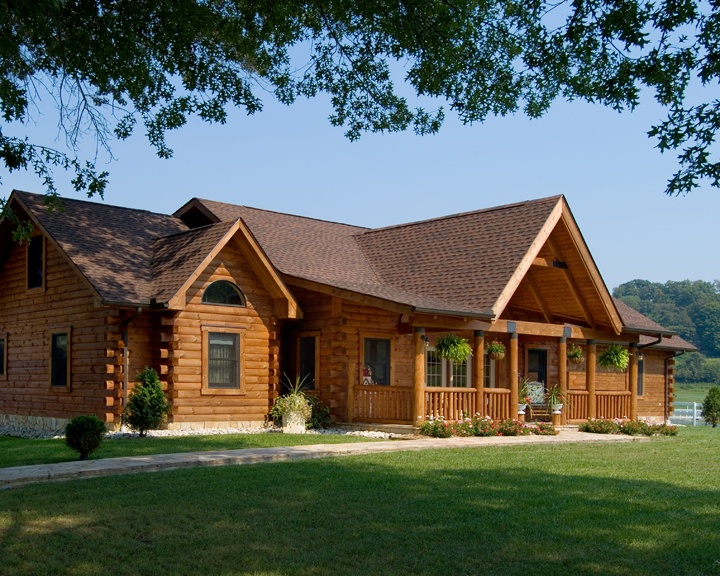


.png?width=137&height=70&name=blue-seal-120-61-bbb-21001218%20(1).png)